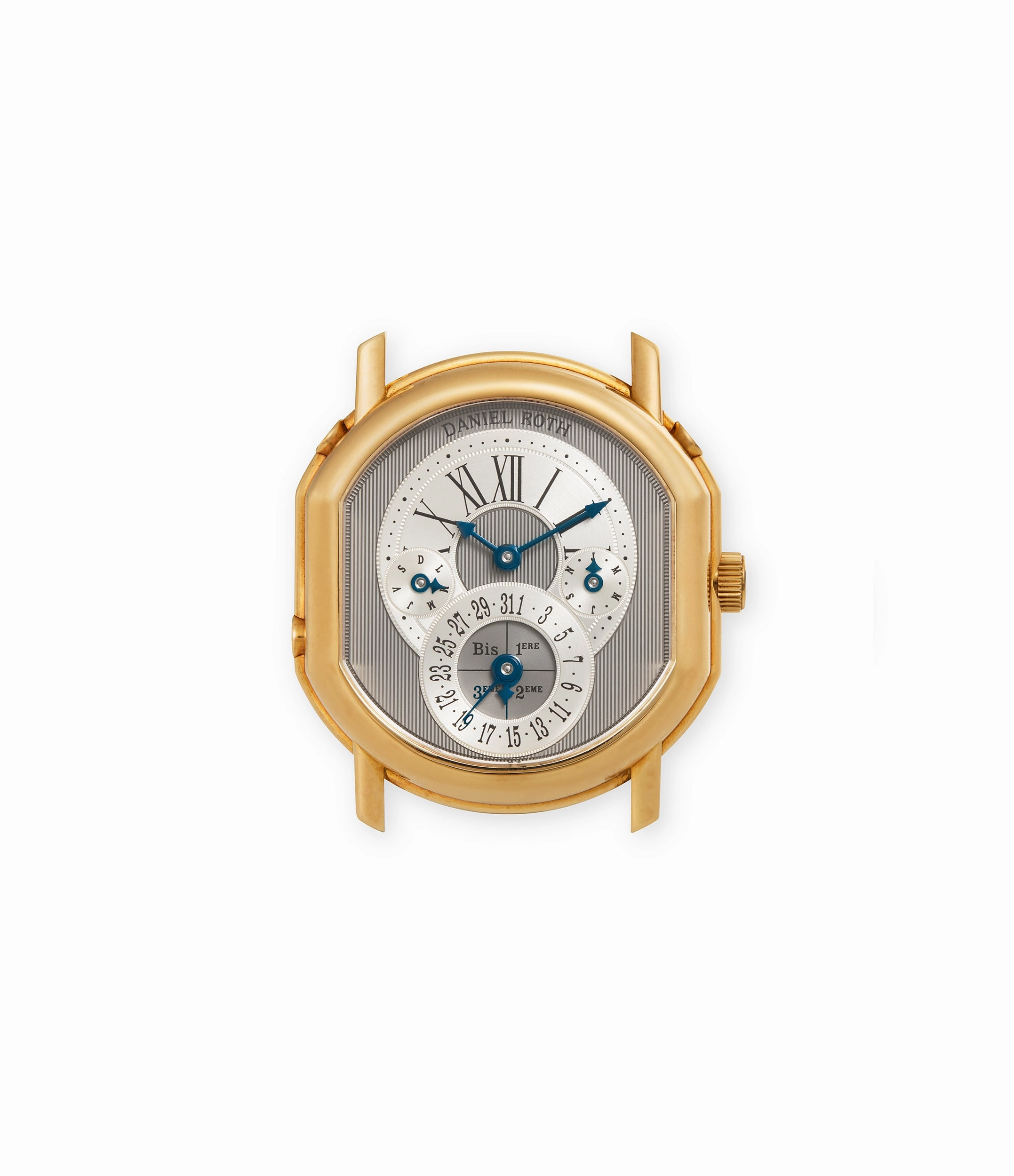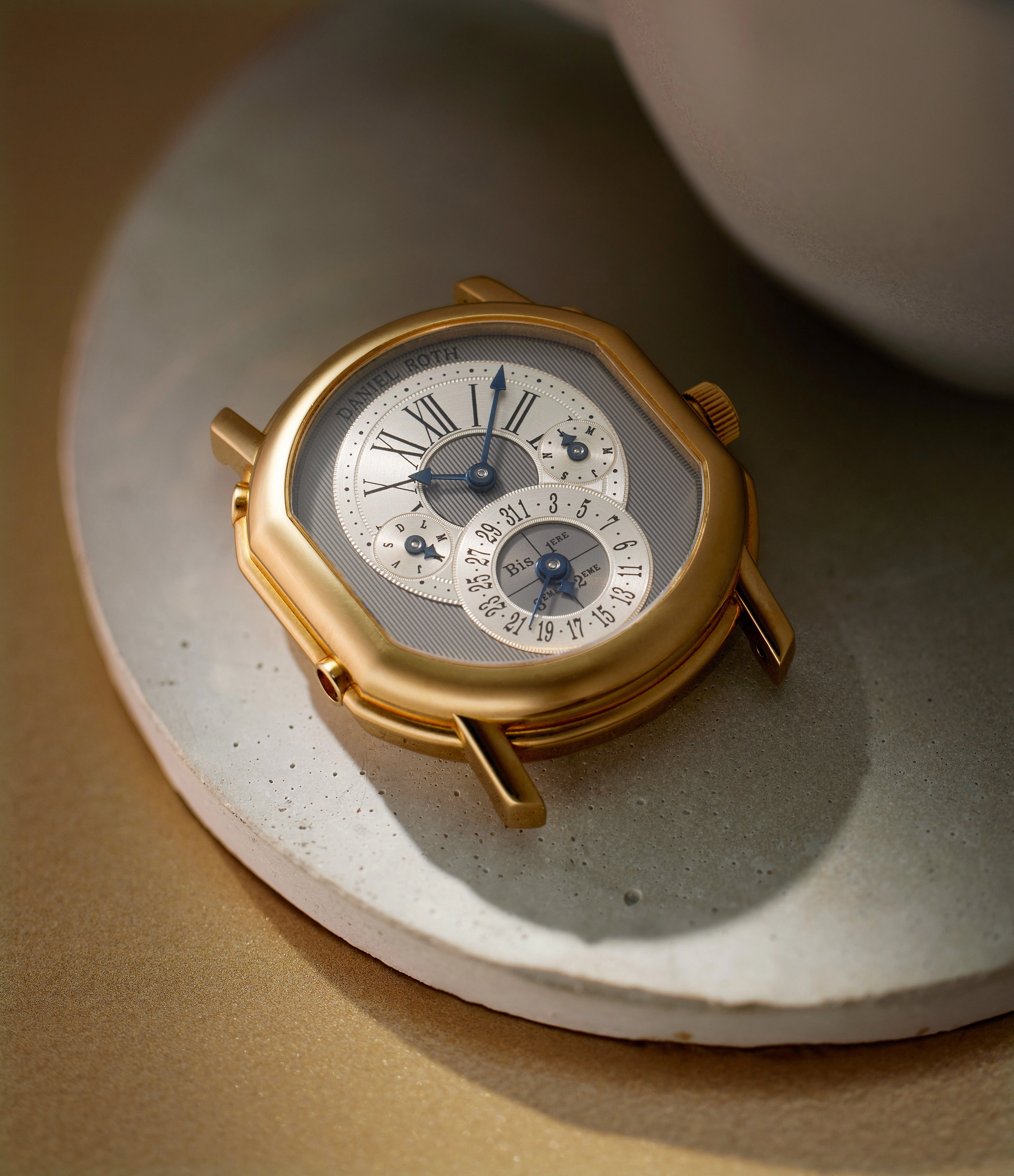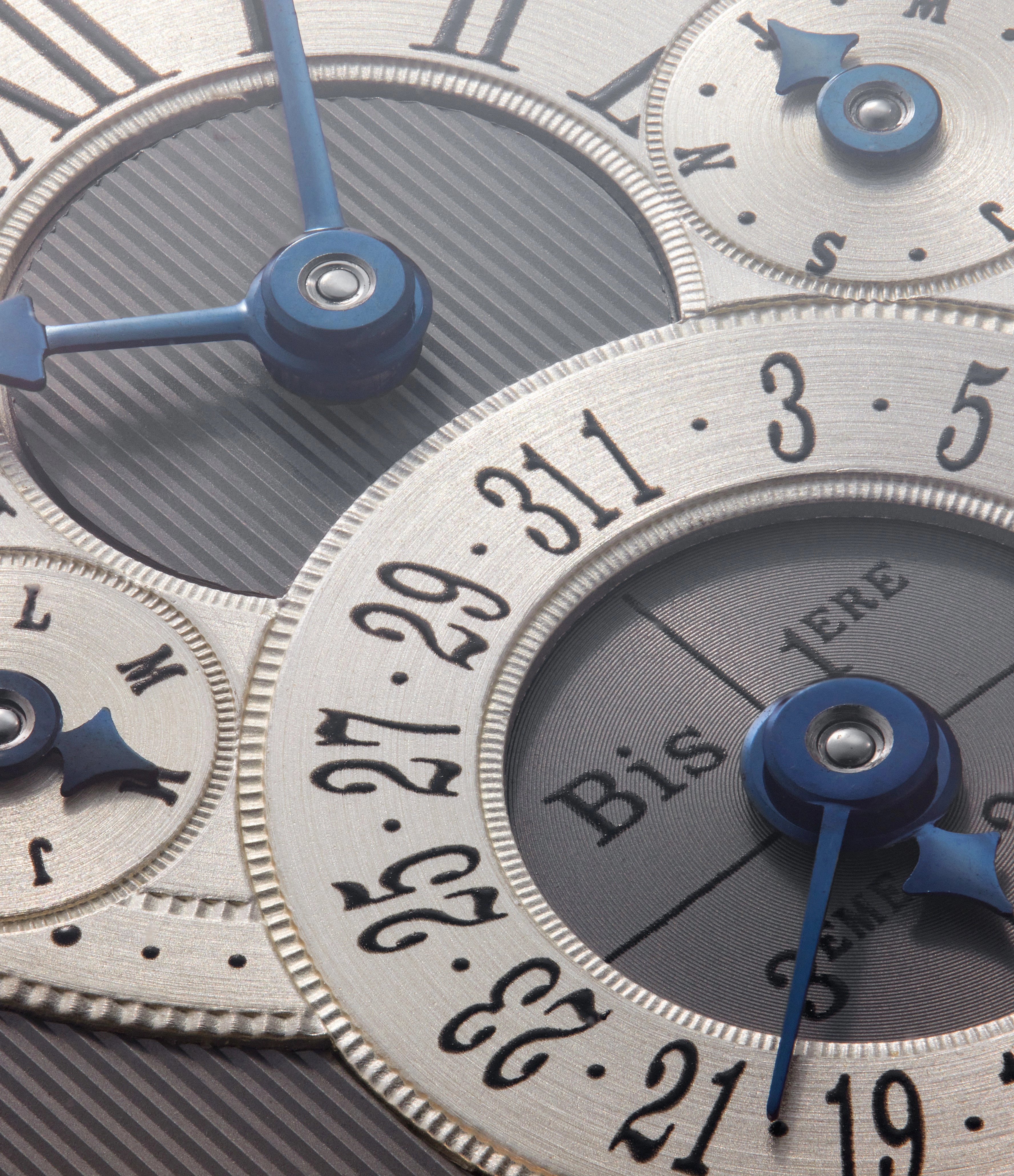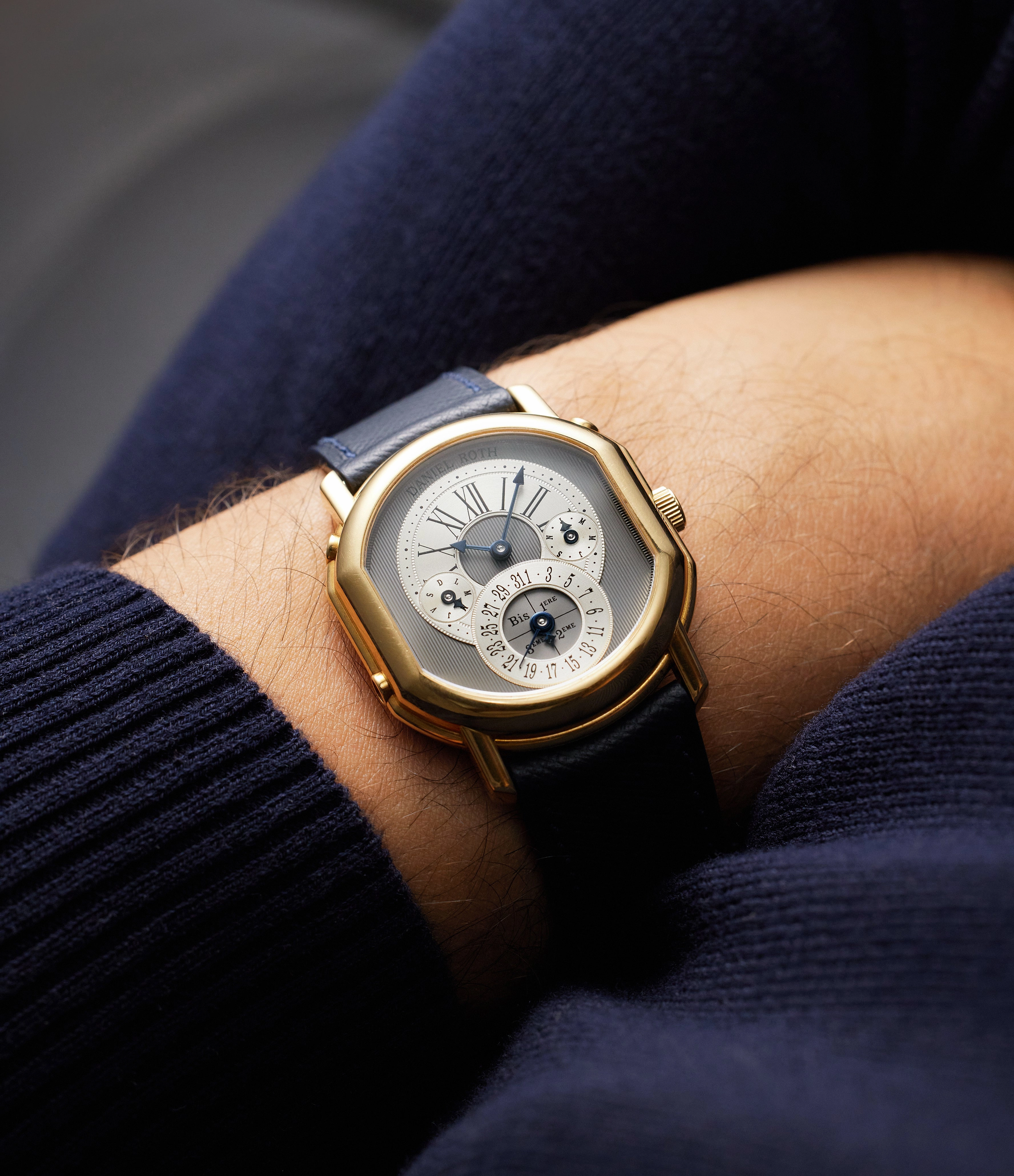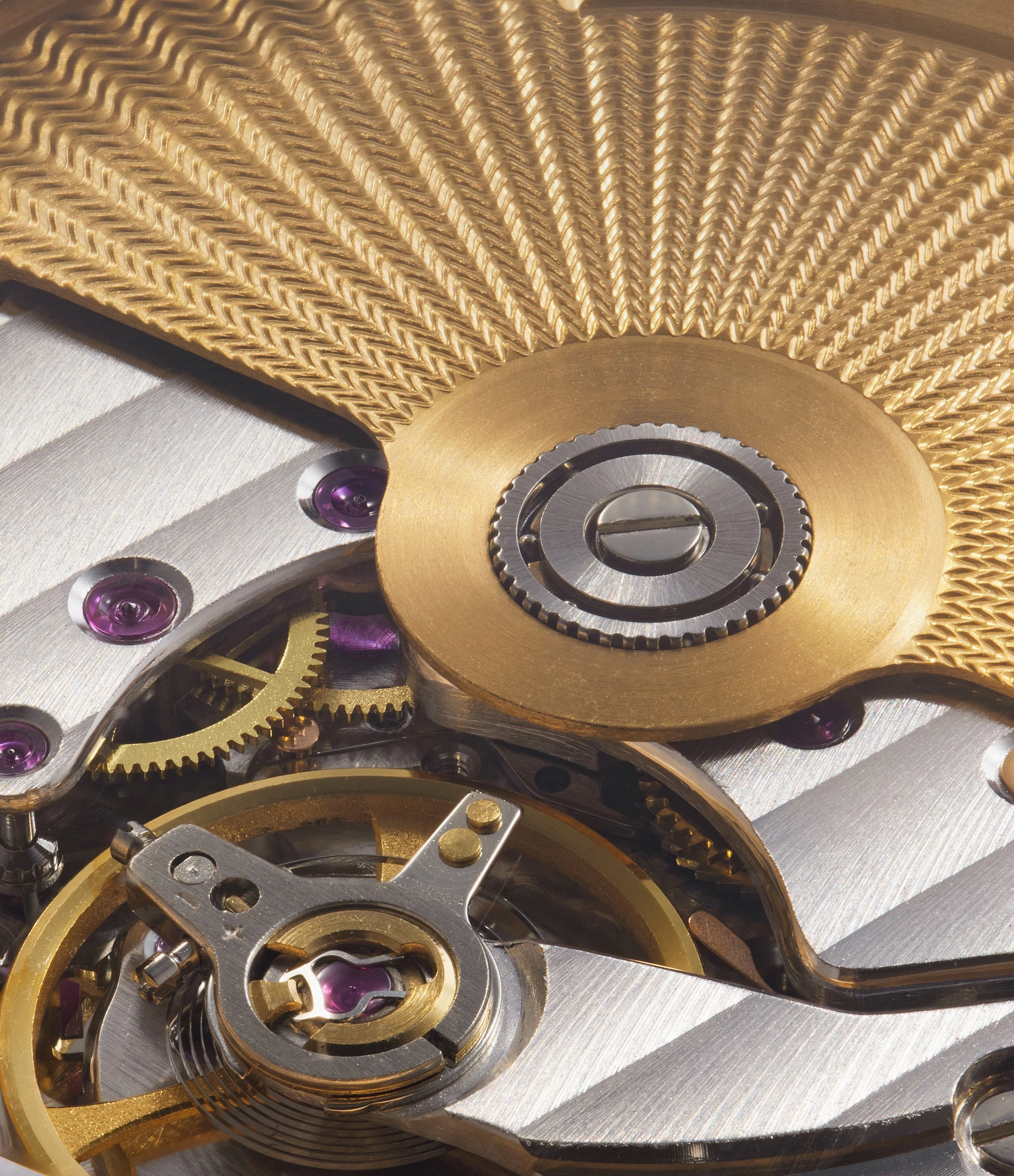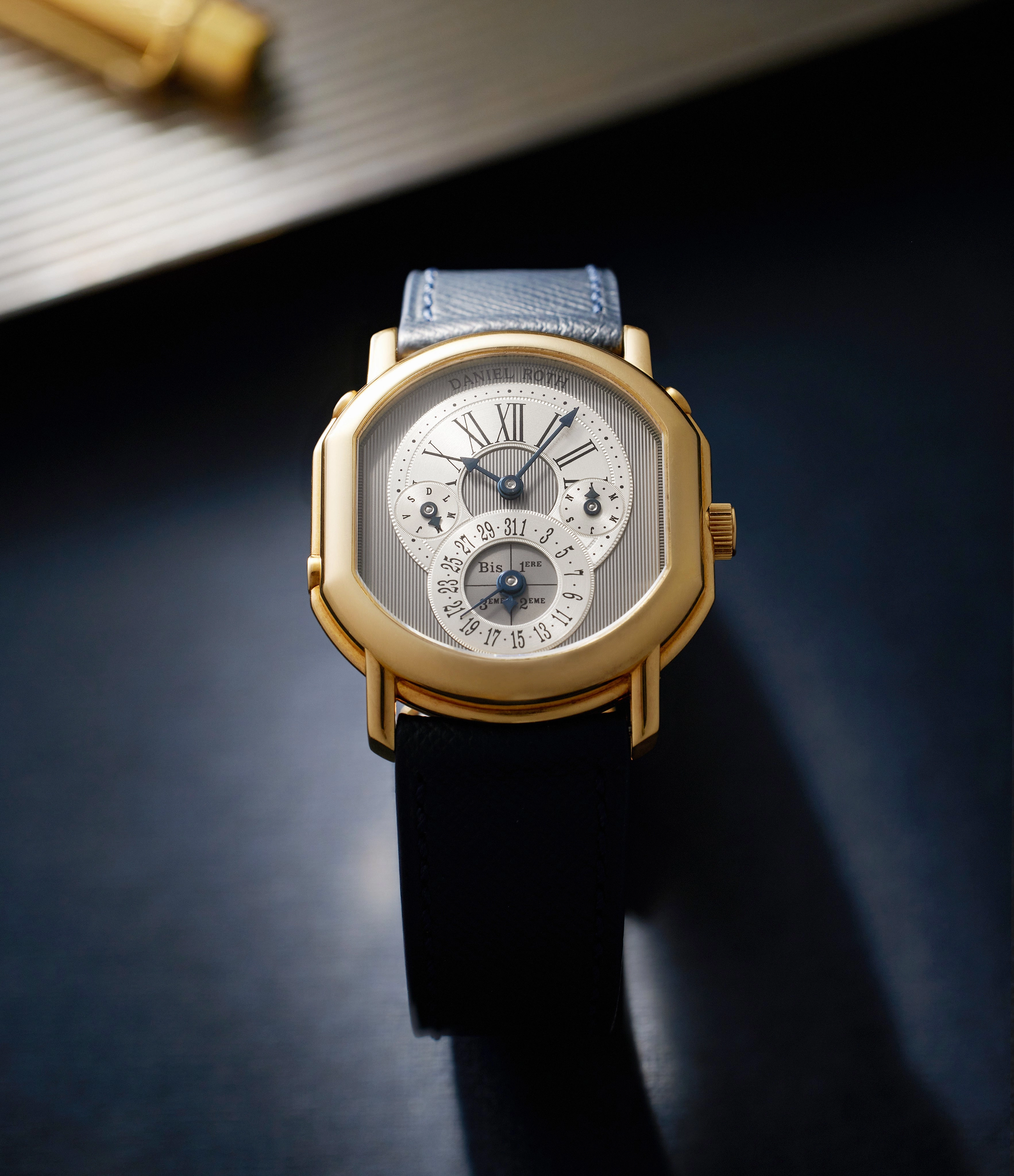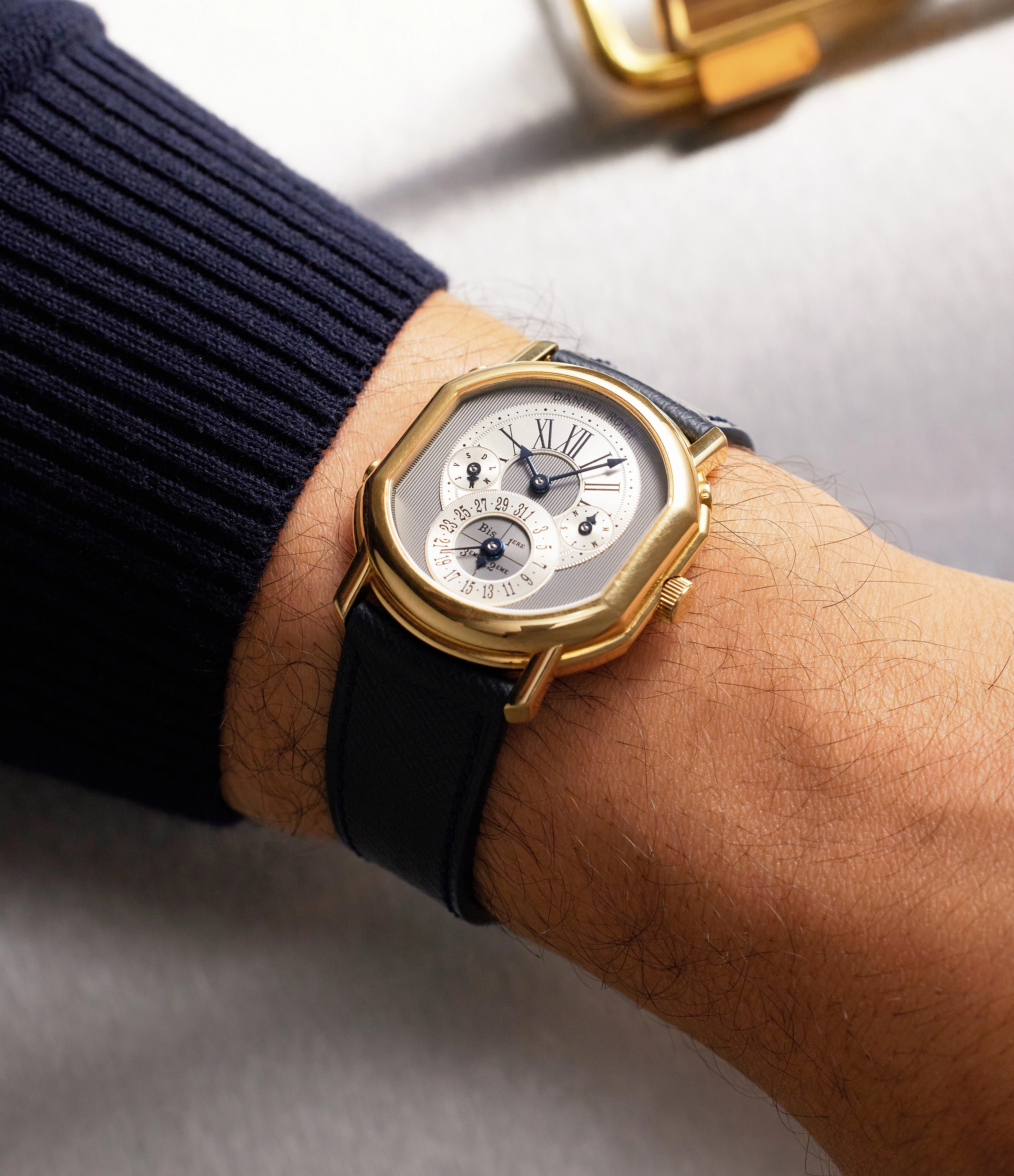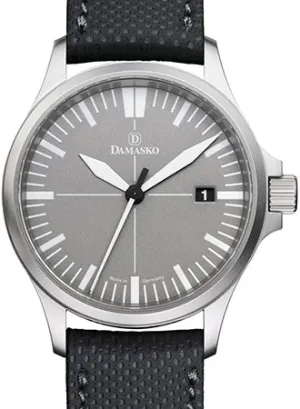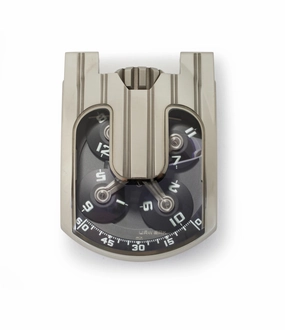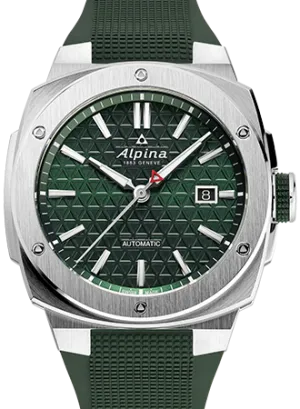Featuring a perpetual calendar module developed by Daniel Roth in conjunction with Philippe Dufour and based on a reworked Lemania 8810 ebauch, this Perpetual Calendar 2117 reimagines the traditional layout. Created in the early days of the brand, the 2117 integrates an innovative and unusual instantaneous change for all the indications, all alongside Roth's signature design cues.
Shortly after starting his eponymous brand, Daniel Rothdecided to tackle one of the most classic complications in horology, the perpetual calendar. To help him with this project, he approached none other than Philippe Dufour, who had only just begun his journey as an independent watchmaker.Not only was Dufour highly skilled in this sort of work, but he also happened to live just down the road from Roth's workshop.
Together, they sought to develop the worlds first instantaneous perpetual calendar, where all the indications wouldflick into place, rather than gradually move into position.They used theLemania 8810as their bauche, jointly developing a perpetual calendar module which would sit on top of it. According to Dufour, the process was rather laborious, even with his experience working on complicated movements. As he puts it,
I remember it being hard work. It took me about six or seven months to finish the movement.
Roth first announced this project at Baselworld in 1991, where he presented a prototype featuring the apertures for the day and date. However, as Roth and Dufour found out during the development process, too much energy was required for the indications to jump into place. As such, they replaced the digital display for the day and date with two sub-dials and sets of hands in order to decrease the force needed to move all the gears. Evidence suggests that both versions were released at Baselworld in 1993, two years after the project was first announced. This watch remains the most heavily modified out of all of Roth's work produced from this era.
For thereference 2117, Roth reimagined the perpetual calendar dial layout, foregoing the traditional approach usually adopted by others.The sub-dial at 6 o'clock isused to indicate the date on the periphery, with the year on the inside, sinking lower down into the dial.As for the month and day of the week, these are displayed in two smaller sub-dials, with the former at 3 o'clock and the latter at 9 o'clock.The indications aredisplayedin French for example, "D" on the day sub-dial stands for "Dimanche", which is Sunday.This example is a particularly early, as evidenced by the lack of a moonphase, which also is the more desirable configuration.
Made out of white gold, the dial features a sharp pinstripe pattern, engraved by hand.This contrasts with the brushed surfaces of the chapter ring, with roman numerals, as well as the date indicator further down.Thevariety in finishing gives a satisfying depth to the design and a welcome touch of variety.The lance-shaped hands, another visual inspiration from the Abraham-Louis Breguet, are rendered in blue steel. Around midnight, the indications gradually "jump" into place, one at a time, rather than smoothly gliding along.
The yellow gold double-ellipse case is unique in its execution. Neither round nor rectangular, it balances the two different shapes, complemented by a stepped bezel and sharp, straight lugs. Pushers at 1, 8 and 11 o'clock are used to set the different perpetual calendar indications.Measuring 38mm x 35mm in diameter, the watch sits comfortably on the wrist and wears larger than its dimensions would otherwise suggest.
ThisDaniel Roth Perpetual Calendaris powered by a reworkedLemania 8810bauche.On top of the automatic movements sits a perpetual calendar module, jointly developed by Roth and Dufour, and assembled within the brand's Valle du Joux workshop.The movement is subtly finished,with chamfering on some of the angles, as well as polishing and decoration, in the form of Geneva striping. The rotor is made out of solid gold, and engraved by hand. All the operations on the movement required over 100 hours of work, according to a brochure from the period.Additionally, the watch has been serviced by the watchmakers at Petermann Bedat in the last two years, and is accompanied by all the requisite box and papers (although these are unsigned).
If sold within the United Kingdom, this Daniel Roth Perpetual Calendar will be subject to 20% VAT
Closer look
| Brand: | Daniel Roth |
| Model: | Perpetual Calendar ref. 2117 |
| Movement: | automatic calibre Lemania 8810 |
| Functions: | month, date, day, hours, minutes |
| Features: | display back, engraved rotor |
| Case material: | yellow gold |
| Case diameter: | 38mm x 35mm |
| Case thickness: | 11mm |
| Lug-to-lug: | 41mm |
| Crystal: | sapphire front & back |
| Strap: | from our own collection, Daniel Roth yellow gold pin buckle |
| Lug width: | 20 x 16mm |
| Year: | c. 1995 |
| Accompanying materials: | Daniel Roth outer box and inner leather box, Certificate of Authenticity (signed), instructions |
Condition
This Daniel Roth Perpetual Calendar 2117 is in excellent overall condition. The case and lugs show very light signs of wear, with superficial marks on the material's very surface, consistent with minimal wear over time. The dial, hands, and movement have been well preserved, with natural signs of age commonly found with examples from this period. On the top crystal there are extremely light hairline scratches, which are almost unnoticeable without magnification. The hallmarks on the reverse of the bottom two lugs are crisp and well defined, as are the brand's engraving and unique watch number.
Additionally, the watch has been serviced by the watchmakers at Petermann Bedat in the last two years, and is accompanied by all the requisite box and papers (although these are unsigned).
Warranty
The watch comes with a two-year warranty from A Collected Man, alongside a lifetime guarantee of authenticity.

